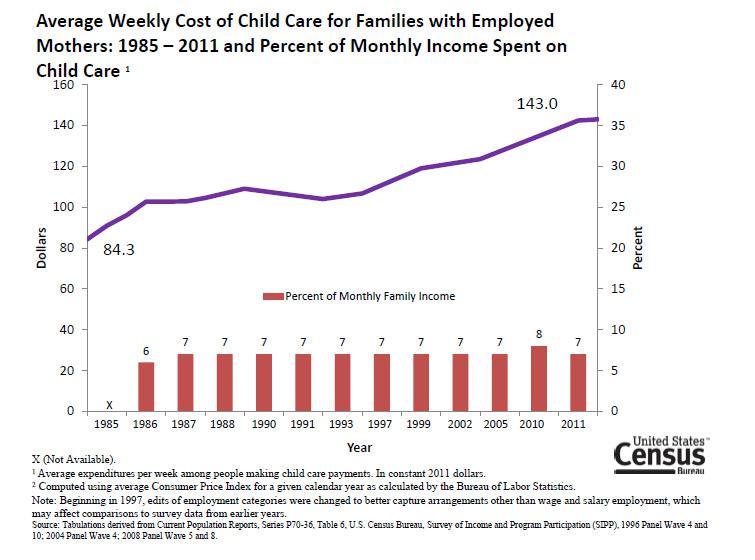President Obama dedicated a decent chunk of Tuesday night’s State of the Union to the subject of child care, calling it a “must-have” for working families and plugging his plan to create a $3,000 tax credit to alleviate its rising expense. As Jessica Grose wrote for Slate earlier, “This is an extremely important rhetorical shift—the move from child care as a mushy, emotional, frivolous extra, to a serious imperative.”*
How expensive is child care today? It can vary enormously state to state but looks an awful lot like a year of public college tuition. According to Child Care Aware, the average cost of enrolling an infant in a full-time day care center ranges from $5,496 in Mississippi to $16,459 in Massachusetts. For a 4-year-old, the price goes from $4,515 in Tennessee up to $12,320 in Massachusetts. Families can save a bit by sending their children to smaller child care homes, rather than the larger centers, but the quality of care also suffers a bit. Also, keep in mind, these are averages. Pop onto Twitter, and you’ll find plenty of parents volunteering horror stories of $20,000 annual fees.
There is some good news about child care expenses. Adjusted for inflation, the average cost of care for families with working mothers grew from $84.30 a week in 1985, or about $4,300 a year, to $143 in 2011, or about $7,400 annually. However, earnings have risen as well—so the expense has remained roughly equal to 7 percent of family income.

U.S. Census Bureau
That said, there are also signs that families are getting priced out of professional care. In the boom times of the late 1990s, for instance, 42 percent of families were paying for someone to watch their children while they worked. Today it’s down to 32 percent.
So, why is child care so pricy? It’s fairly simple. You have to pay human beings to watch over kids. And while child care workers aren’t paid especially well, they do have to be paid. If you look at sample budgets for day care centers, or talk to people in the industry, they’ll tell you that, aside from real estate, most of the costs boil down to labor. You might think that looser regulations on the amount of space required per child or how many infants a single worker is allowed to care for might shave some expenses. But studies on the subject have found that, surprisingly, state regulations don’t affect costs much.
“Wages really drive child care costs,” David Blau, an economist at Ohio State University, told me a while back. In high-pay cities and states, child care centers and homes have to pay more, or they won’t be able to lure qualified employees. And that raises costs for parents. Hence the suffering of Massachusetts mothers and fathers, who happen to live in an exceptionally high-wage state.
Unfortunately, there isn’t really a way to make child care workers much more efficient. (There are only so many infants one person can watch, after all.) Which brings us to a sort of unavoidable choice: If we want affordable child care in this country for all families, somebody is probably going to have to subsidize it. A solution isn’t going to magically materialize from the free market.
See more of Slate’s State of the Union coverage.
*Correction, Jan. 21, 2015: This post originally misspelled Jessica Grose’s last name.
